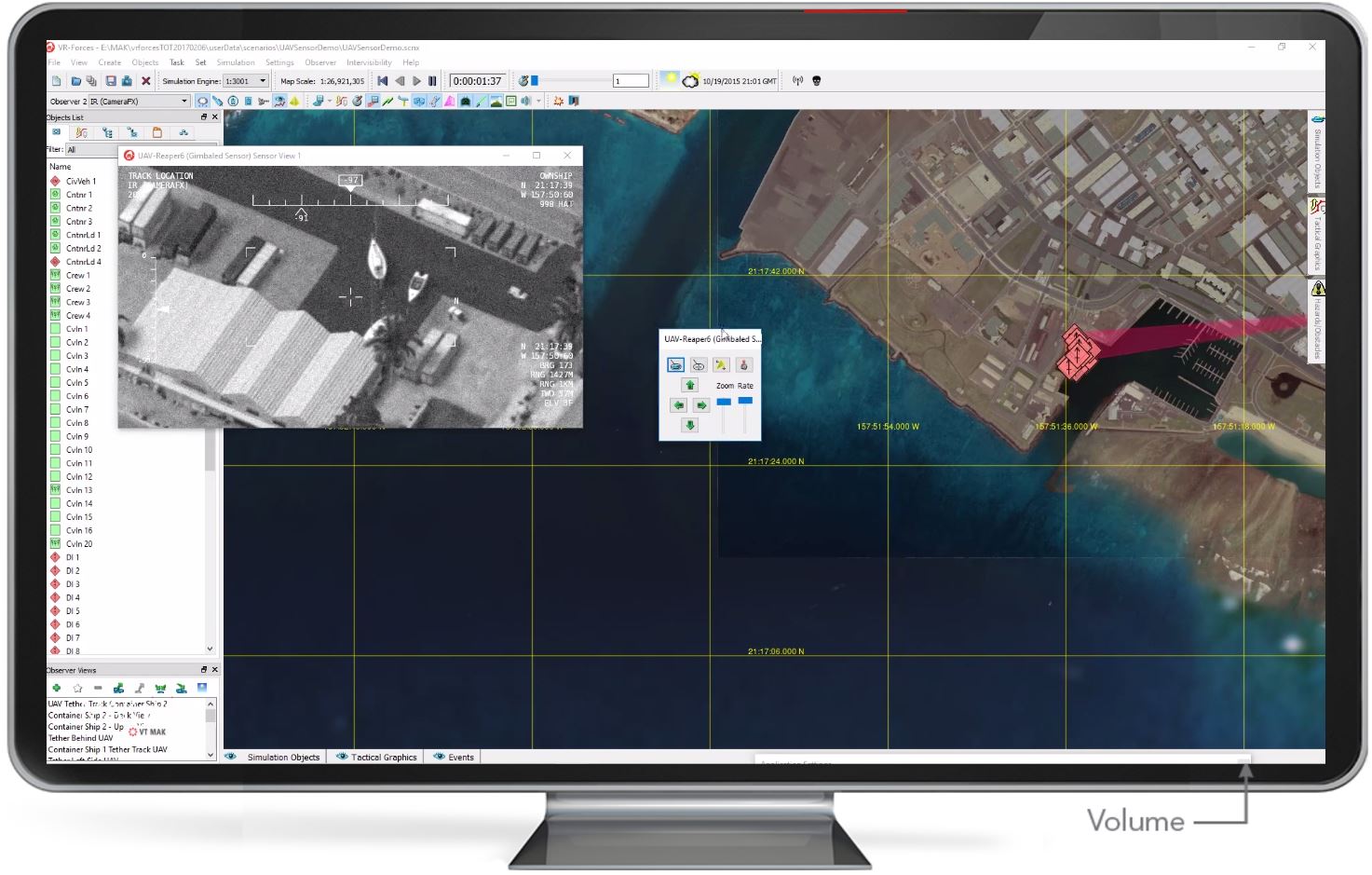What’s at Stake?
You are tasked with training a team of sensor payload operators to use UAVs for urban reconnaissance missions in a specific city. Upon completion of training, trainees must be able to comb an area for a target, make a positive identification, monitor behavior and interactions, radio in an airstrike, and then report on the outcome.
An ineffective training environment could lead to additional costs, losing important targets, and inefficient surveillance systems. Training with a robust solution enhances homeland security human resources for minimal product investment.
What Are We building?
As the instructor, you need to mock up a ground control station with accurate pilot/payload operator role definitions and supply that system with surveillance data from a content-rich simulation environment. You need to construct a scene that is informative while providing trainees with opportunities to develop their instincts and test their operating procedures based on how the scenario unfolds.
Each UAV must be equipped with an electro-optical camera as well as an infrared sensor mounted to a gimbal. Radio communication between the UAV operators and a central command center must be available to coordinate surveillance and call in airstrikes.
Trainees need to experience the scenario through the electro-optical sensor and infrared sensor with rich, accurate data overlays to provide them with the information they need to communicate positioning and targeting effectively.
Your urban environment requires crowds of people who behave in realistic ways and traverse the city in intelligent paths. When a UAV operator spots someone, they need to be able to lock onto them when they are in motion to mimic algorithmic tracking tools.
The simulation needs to be adjustable in real-time so that the instructor can minimize repeat behaviors and walk the team through different scenarios. Instructors also must be able to judge the effectiveness of a trainee’s technique.
The MAK Advantage:
In this particular case,![]() VR-Forces provides all the software you need to bring your environment to life.
VR-Forces provides all the software you need to bring your environment to life.
Watch this MAKtv episode to see how easy it is to set up.
Sensor modeling is a point of strength for VR-Forces. Give your trainees a beautiful, detailed point of view of the scene through the electro-optical sensor, and provide a high-fidelity infrared sensor display when the daylight fades. VR-Forces adds accurate data overlays so that trainees can learn to quickly and accurately read and report based on that information. Instructors can visualize 3D volumetric view frustums and assess trainees’ combing strategies as well as any gaps in coverage, and engineer surveillance systems. We model sensor tracking to lock onto targets while they are in movement or on a fixed location.
VR-Forces is an ideal tool for scenario development. It can model UAVs in fine detail, while allowing for instructors to customize those entities based on the scope of a mission. It’s simple to add the gimbal-mounted sensor array that we need for this scenario and define parameters for - including zoom, zoom speed, slew rate, and gimbal stops. Easily populate an urban environment with people by using the group objects function to add crowds of entities at a time. VR-Forces has features from Autodesk's Gameware built in, enabling Pattern of Life intelligent flows of people and vehicles, in addition to plotting the locations and tasks of individual entities. The Pattern of Life lets you manipulate patterns within the scenario – including realistic background traffic, whether it’s people, road, or air. Certain ![]() DI-Guy capabilities have been integrated into VR-Forces, meaning behavior modeling is more authentic, thanks to motion capture technology. Now you can train your team to look out for certain suspicious movements and calibrate their responses based on the actions of the target.
DI-Guy capabilities have been integrated into VR-Forces, meaning behavior modeling is more authentic, thanks to motion capture technology. Now you can train your team to look out for certain suspicious movements and calibrate their responses based on the actions of the target.
What really makes VR-Forces perfect for training is the ability of instructors to manipulate the scenario in real-time. You can keep your trainees from running scenarios that are too predictable by having your target enter buildings, change his mode of transportation, or actively attempt to avoid detection, all during live action.
Interested in Learning More? Have a look at the VR-Forces page for more information.
Reach out to request a personal demonstration.


